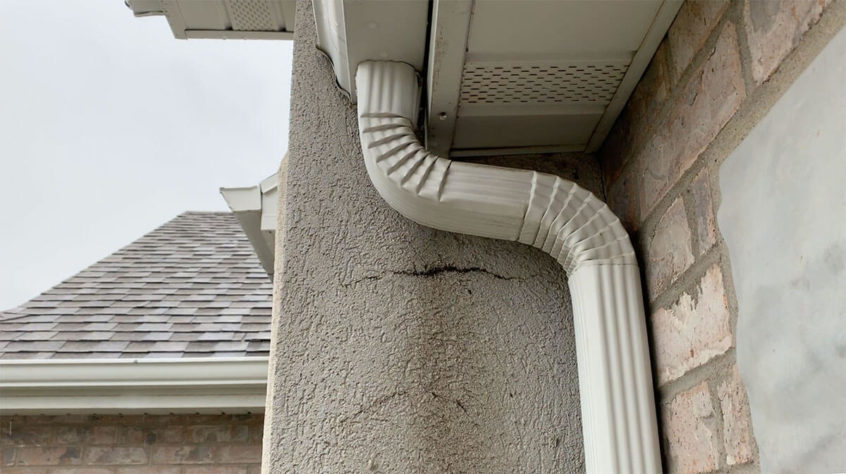Stucco siding is growing in popularity. But as its usage spreads, so do questions about its upkeep. One major question homeowners have involves how to keep water from damaging stucco.
History and Benefits
Stucco has existed as a siding solution for a long time, dating all the back to ancient Greece. It is believed that stucco found its way to Mexico and the American Southwest when Spaniards brought the custom with them from the Mediterranean. Regardless of its origins, it is now a popular option for siding. Not only is it appealing to look at, but it comes with a lot of benefits over traditional wood or vinyl siding.
For starters, it is fire resistant, which makes satisfying building codes easy. Stucco is also a quality insulator, which will help keep your house warm in the winter and cool in the summer. Furthermore, in the right conditions, stucco can last for decades, with little need for maintenance.
Stucco and Water Damage
Despite all of these benefits, stucco is not without its drawbacks. One reason it is more popular in the Southwest is because of the lack of clay in the soil composition. In other regions of the country, where settling is a factor, stucco can crack. When this happens, water damage can become an issue. The same is true if it is not installed correctly, or if proper maintenance isn’t kept up. This is why it is important to inspect your stucco regularly.
There are three main causes of water damage to stucco:
- Wicking can occur when stucco is in contact with concrete or dirt on the ground allowing moisture to be absorbed. This results in blistering, staining, or efflorescence.
- Hydraulic pressure happens when water moves from behind the stucco to its surface, this can cause blistering or efflorescence.
- Surface moisture occurs when water runs down the stucco’s surface. If not allowed to dry, this can damage the layer of paper behind the stucco leading to structural damage or mold. Whether you have stucco siding or not, this is a big one.
Keeping Water from Damaging Stucco
Luckily, keeping water from damaging stucco is relatively easy to do.
Wicking is preventable. During installation, make sure the stucco does not go all the way to the ground. If the stucco touches the ground, it will absorb any moisture present in the soil or even the concrete. This can also occur if the soil is built up around the home later during landscaping or gardening projects. The same goes for concrete patios or driveways that are added after the stucco installation was completed.
Hydraulic pressure is another form of water damage caused by improper installation. Because stucco is porous, there must be a moisture barrier between the home and its stucco siding to prevent water from becoming trapped. This barrier should include a weep screed, which channels the water down the moisture barrier to the base of the wall. From there, it can safely escape through little holes leading to the outside.
Finally, the most common form of water damage to stucco occurs from prolonged exposure to surface moisture. A sprinkler system that sprays the side of your home every day can cause this. So can a roof with clogged rain gutters or no gutters at all. To protect your stucco siding, you must have a working rain gutter system safely directing water away from your home.
Because installing a gutter system on stucco is a bit trickier than wood or vinyl siding, leave the job to experienced professionals. Worried about how your gutter system (or lack thereof) is affecting your stucco siding? Let us help you! Call (801) 676-1048 or contact us on our secure website for your free bid today!


